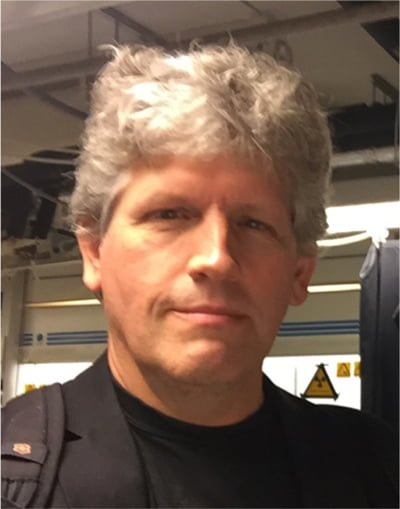
Dr. Sveinn Ólafsson is the guest on the Cold Fusion Now! podcast with Ruby Carat. Dr. Ólafsson works with a form of Rydberg matter called ultra-dense hydrogen which could be related to the cold fusion/LENR reaction.
Listen to the Cold Fusion Now! podcast with Dr. Sveinn Ólafsson on the Podcast page.
Dr. Ólafsson received his Ph.D. from Uppsala University and is currently a research professor at the School of Engineering and Natural Sciences at University of Iceland. He had a career in hydrogen storage before Andrea Rossi sparked his interest in cold fusion.
“In the evenings, I just started to read”, says Dr. Ólafsson, “and I googled, by chance, ‘dense hydrogen‘, and up came Leif Holmlid. ”
He describes how Dr. Leif Holmlid was researching Rydberg matter and discovered a new state of “ultra-dense hydrogen”.
“What was so intriguing was the short distance between two protons that he claimed. I started contact with him shortly after that, and that is the start of any experimental work I have done in this field.”
“He’s been the only guy doing this, except with a few graduate students initially, but he retired a few years ago. Since then, he has been alone, and after I contacted him, there was two of us then in the beginning, and then Sindre came later.”
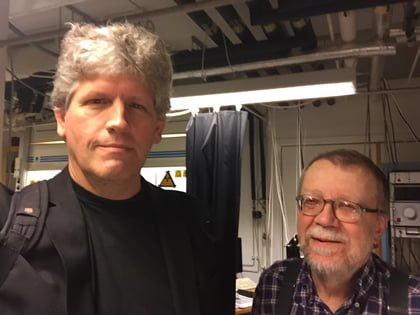
“He uses a very common techniques which is time of flight spectroscopy, or sometimes time of flight mass spectroscopy. This is widely used in all kinds of chemistry experiments. “
“What is different here, is that Leif has a different production unit of ions – or sample – which he is studying. So he was initially just interested in the Rydberg states of atoms, and this whole time, he has been improving techniques to study that.”
“And by chance he noticed that the time of flight was too short, actually, so that started the ultra-dense hydrogen.”
In time of flight, he is referring to is the time it takes a particle from the sample region to be ejected and travel down a tube to a detector some distance away after being stimulated by a laser. Dr. Ólafsson explains the process.
“What the laser is doing, since it has wavelength of say 1 micron, it’s actually letting zillions of electrons and protons to oscillate. So it’s joggling something there, and these millions of particles somehow react and something flies out.”

“The time-of flight is measured initially in the normal state of hydrogen Rydberg matter. When the laser breaks up these clusters, the individual atoms travel apart because of the positive charges. Some times of flight are so short, that the energy, or the closeness of these two entities, is so close, they would have to be 2.3 picometers apart initially – that is the ultra-dense state.”
“But also at the same time, you can see they were close at normal chemical distances also. So you can see both the normal state and the dense state using the same instrument. What is different is that in one case you’re having time of flight in microseconds, and the next you have time of flight in nanoseconds, or that range.”
“Time of flight is a technique used in normal chemistry all the time. You hit it with a laser and these chemical entities fly apart, usually just 5 eV, and that’s it. ”
“Leif is using the energy of 630 eV, which is quite high, and no chemist or physicist will accept that you have such bonding distance, or bonding energy, in any molecule, or any states, because quantum physics says that state is unbound and not stable.”
Leif Holmlid was using higher laser energy stimulation to perform a common experiment, and it turns out that his choice of sample catalyst may have led to the surprising outcome of an ultra-dense state for hydrogen.
Dr. Ólafsson says, “Before that, he had been studying different easy metals like potassium which is easy to study and easy to produce Rydberg states, and I think by chance, he used catalysts that could do similar things to hydrogen as to potassium.”
“Hydrogen has a very high ionization energy compared to potassium and all these alkali metals, so it is very strange that you could make a a Rydberg state of hydrogen just by catalysts.”
“Leif started first with a common catalyst, the one making all this plastic waste that you find in nature now. This catalyst is one the steps of making polyethylene plastics.”
“So there are tens of millions of tons of this catalyst made every years, just to make plastics. But if you put some styrene in, then you’re changing some atoms on that molecule. That catalyst is usually a very hollow material, or nano-porous, so you basically have a huge surface area in the catalyst, which just makes the production better.”

“Basically this is a nano-porous surface, and what is probably going on is that hydrogen is adsorbed on that surface, and we’ve been discussing that this is just a special surface where you can prime the hydrogen to have a Rydgberg state as the lowest energy due to the potassium ions which are on the surface also.”
“This is a mixture of ironoxide – rust – and potassium, and it’s well known that when you put oxide surfaces with potassium, the three electrons from potassium forms a kind of electro-gas on top of the surface. “
“So this has never been studied or calculated because it’s very complicated to do it since the orbit of the Rydberg state is huge. It would make the Rydberg atom in a Rydberg state, which has a circular orbit with high quantum numbers – if it is an atom.”
“You can not do that easily to hydrogen, but on the surface, you could make a joint cooperation between the surface and the hydrogen. These may join up on the surface and give us the first states of this process, which is just the normal hydrogen Rydberg matter which is the feeding matter for the ultra-dense state.”
“You have this feedstock which is the normal hydrogen Rydberg matter, and through some excitation, it’s actually more thermodynamically stable to go into the other phase, but not so greatly, so that can obviously form some thin layers on top of metals, and that has been seen in experiments of ultra-dense state, which has so many forms creeping on the surface, and can even live for days if you leave it in the chamber there.”
“It’s actually fairly easy to prove this is true between two protons in a course of quantum physics, and I totally agree on that viewpoint.”
“But nobody knows what you can say if you are trying to do this with, say 15 or 19 particles, because that theory is not so easily solved. It’s not so easy either to say that it is not possible.”
“Most people use the simple way out and say it’s impossible and nonsense, because they are using so simple a model; they are not using multi-particle physics.”
For the ultra-dense state of hydrogen, Dr. Ólafsson says that “it’s always in that range of 2.3 pm. Leif reports that sometimes it’s a little bit less, and sometimes higher. He has given indication that this material has different spin states.”
“The only problem with is that the theory describing it is an empirical model, so it has no support from quantum calculations. It is describing his results, so we can say there are excited states which are a little bit longer distances and so on.”
“Since Leif Holmlid is the only man who has been doing this, we are replicating some parts of his work, but so far, we have not been studying the 2.3 picometer much. We’ve only been studying the ultra-fast breakup, when we have a higher time of flight. It’s not actually a bound state, but it’s actually flying out with much higher energy.”

“At the moment we are just trying to catch up with Leif. We have put the labs together, and we are trying to replicate some of his work, because according to him, we are the first experimentalists who have contacted him and tried to replicate things.”
“It’s actually a nice story to tell that I had applied for some money from the Icelandic Research Council here, and the main argument from all the reviewers was that “nothing has been published except him, and, if this were to be true it would possibly be quoted in the highest scientific journals’. So actually it was a catch-22; they believe all these claims are so wonderful, that somebody must have already studied it, but nobody has! It’s not good to be #2 in applying.”
“I managed to get funding, it was from a Technological Development fund. They are less bound to what science is and is not.”
Asked if he thought that ultra-dense hydrogen could be behind the cold fusion reaction, Dr. Ólafsson said that was his original thought when he saw Leif’s research.
“I thought, this is so close, this must be cold fusion. But it is so complicated a behavior, and of course, getting experiments in cold fusion and experiments in Leif’s research, to join up is of course difficult because they’re in different surroundings.”
“When I contacted Leif and asked him if he thought this was possibly behind cold fusion, he was skeptical, and didn’t want to be linked to the cold fusion thing.”
“But I managed to make a simple calculation with this distance of 2.3 picometer and some simple assumption, and it gave me that the rate of this distance could be enough. But it has one problem, because if you have this tunneling mechanism at this distance, like muon-catalyzed fusion, then you should still see the same result. In other words, you should get radioactive neutrons and protons. So these particles trying to tunnel in close to each other, that is not the right physics [for cold fusion].”
“But Rydberg matter and ultra-dense physics gives us the opportunity to study multi-particle interactions. In a sense, it tells us, if there is a link (between LENR and ultra-dense hydrogen), then it’s a multi-particle tunneling or interaction which could be making cold fusion signals.”
“I don’t know any samples without a crack or opening. Foil has cracks and so on, so you don’t know. I think there is nothing denying that ultra-dense hydrogen is in all cold fusion experiments.”
After being schooled in ultra-dense hydrogen production, Ruby asked Dr. Ólafsson how it was working with graduate student Sindre Zeiner-Gundersen in Norway, who received the test reactor from Tadahiko Mizuno last year.
“Well Sindre is not quite so young a student, he’s in his 30s, so that makes the game easier, you could say! Sometimes, he’s the student, and sometimes, I’m the student.”
“Since we are building one lab in Norway, and one lab in Iceland, which is a little bit different lab, he’ll makes something in his lab, and I catch up with that, and I do the same here, vice versa. ”
“And then we are traveling to each other’s lab, and I’ve been here three years already, and a PhD should be over in three years, but we have the problem of wanting to see more, and do more. So we are always joking ‘when will he finish his PhD?’!”
“It’s a nice thing when you have started in a different field, and one day you kind of get bored, when you start doing the same thing over and over again.”
“So the main reason for me to join this field was out of curiosity, and to see what could be done differently from these nickel and palladium-type experiments.”
“And I think along this way, from 2011 to 2019, you read so many different fields, that you are suddenly becoming not an expert, you know something of everything in the end, and that has been the most enjoyable part of this project.”
“But I’ve still been doing a bit of what I’ve always done. Like I have projects at CERN with a large international group, where we meet up once a year and do a well known technique. It’s not cold fusion, but it’s nice.”
“And there’s another project here which I take part in where we try to find catalysts for ammonia production, so it’s a little bit of everything.”
Dr. Ólafsson’s colleagues have followed the journey. He says, “At the moment they’re so used to it – seven years later! They just smile, yeah, yeah, yeah…”
“I gave a talk last week at the Icelandic Physical Society about what is going on in this field here. And my closing words were, ‘If you’re confused, you’re not alone, I’m also confused as you’.”
“I was just presenting experimental facts, and strange ones. ”
“I think scientists are much more open – until they have read the applications – and then they get scared!”
Listen to the Cold Fusion Now! podcast with Dr. Sveinn Ólafsson on the Podcast page.
See Experimental Techniques for Studying Rydberg Matter of Hydrogen by Sveinn Ólafsson from the 2019 LANR/CF Colloquium at MIT.

 “I have experienced earthquakes many times before. Each one was terrible, but this time it was a bit different,” said Dr. Mizuno of the shaking.
“I have experienced earthquakes many times before. Each one was terrible, but this time it was a bit different,” said Dr. Mizuno of the shaking. 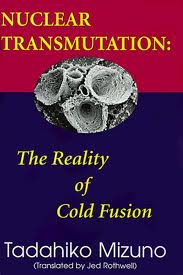
 Hideki Yoshino, the founder and CEO of Clean Planet and an organizer of collaborative LENR research, reported on
Hideki Yoshino, the founder and CEO of Clean Planet and an organizer of collaborative LENR research, reported on 
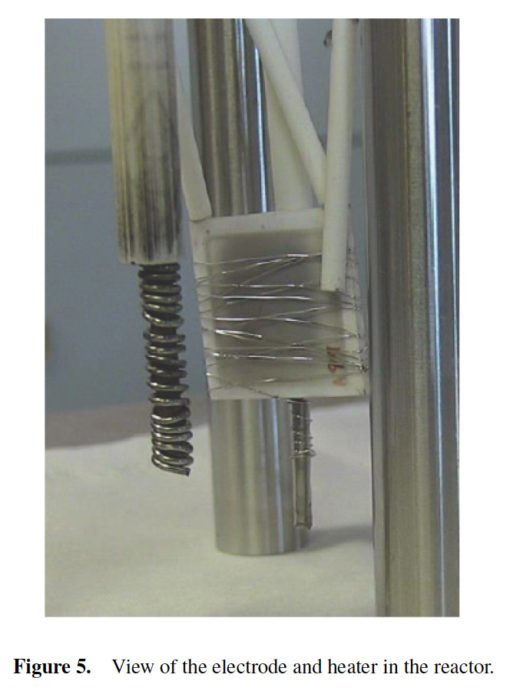

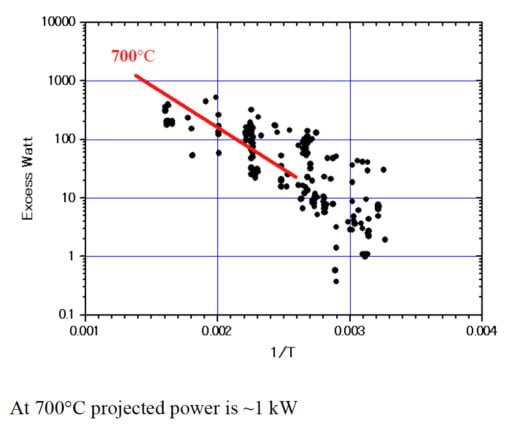

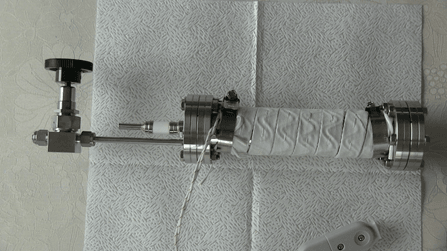
 Sindre Zeiner-Gundersen is Director of Operations of Norrønt AS, a company providing engineering project management and patent development. He is also a PhD candidate in Physics who has been researching ultra-dense hydrogen and Rydberg matter with PhD supervisor Svein Olafsson in Iceland and Norway’s Professor Svein Holmlid.
Sindre Zeiner-Gundersen is Director of Operations of Norrønt AS, a company providing engineering project management and patent development. He is also a PhD candidate in Physics who has been researching ultra-dense hydrogen and Rydberg matter with PhD supervisor Svein Olafsson in Iceland and Norway’s Professor Svein Holmlid. 
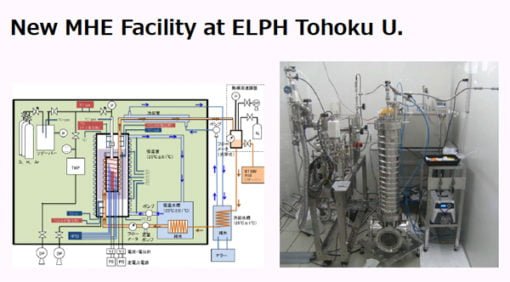
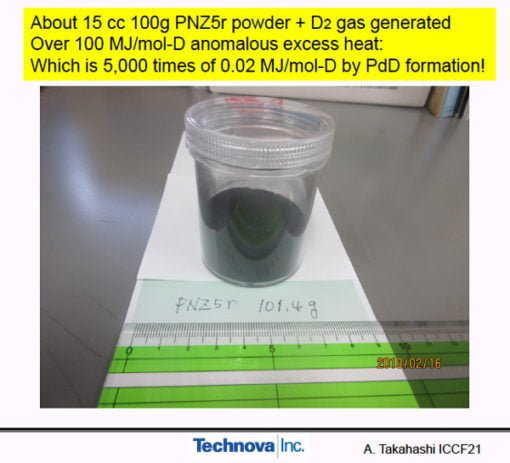
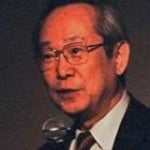 Dr. Akito Takahashi is one of the members on this team that has been working on the problem of cold fusion reproducibility since the early days. A nuclear engineer and senior advisor in the Thermal Energy and Technology group with Technova, he is one of the stars of a crowded Japanese field teeming with talent, and whose range of research have helped transform investigations into the Anomalous Heat Effect into a fast evolving field of Condensed Matter Nuclear Science, where the parade of nuclear effects keep on surprising scientists.
Dr. Akito Takahashi is one of the members on this team that has been working on the problem of cold fusion reproducibility since the early days. A nuclear engineer and senior advisor in the Thermal Energy and Technology group with Technova, he is one of the stars of a crowded Japanese field teeming with talent, and whose range of research have helped transform investigations into the Anomalous Heat Effect into a fast evolving field of Condensed Matter Nuclear Science, where the parade of nuclear effects keep on surprising scientists.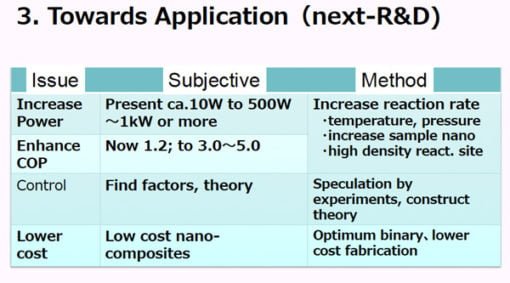
 Nuclear physicist and LENR theoretician Dr. Andrew Meulenberg talks about deep-orbit electrons as an explanation for LENR, and how this model addresses the vast variety of data in LENR experiments.
Nuclear physicist and LENR theoretician Dr. Andrew Meulenberg talks about deep-orbit electrons as an explanation for LENR, and how this model addresses the vast variety of data in LENR experiments. 

 Photo: Reaction chamber in operation. Note that the true light color was orange. Courtesy Jack Cole.
Photo: Reaction chamber in operation. Note that the true light color was orange. Courtesy Jack Cole.